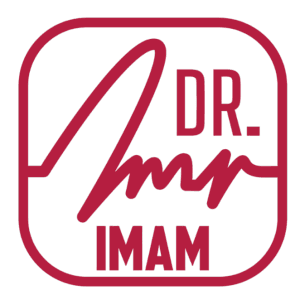Introduction Blood Pressure Disorders
Blood pressure disorders are among the most common cardiovascular conditions affecting millions worldwide. These disorders can manifest as hypertension, where blood pressure is consistently high, or hypotension, where blood pressure is abnormally low. Both conditions, if left untreated, can lead to serious complications such as stroke, heart attack, kidney damage, and organ failure. Understanding the causes, risks, and treatment options is crucial for maintaining long-term cardiovascular health and improving quality of life.

Understanding Blood Pressure Disorders
Blood pressure is the force exerted by circulating blood on the walls of arteries. Normal blood pressure is typically around 120/80 mmHg. Deviations from this range can result in significant health risks.
Hypertension
Hypertension is defined as consistently elevated blood pressure above 130/80 mmHg according to modern guidelines. It is often called the “silent killer” because it may not produce noticeable symptoms until complications arise. Common causes include genetic predisposition, obesity, high salt intake, sedentary lifestyle, stress, and underlying medical conditions such as kidney disease or hormonal disorders.
Hypotension
Hypotension refers to abnormally low blood pressure, generally below 90/60 mmHg. It may cause dizziness, fainting, fatigue, and inadequate blood flow to vital organs. Causes include dehydration, blood loss, heart problems, endocrine disorders, and certain medications.
Goals of Treatment
The primary goals of treating blood pressure disorders are to:
Maintain blood pressure within a safe range
Prevent complications such as stroke, heart attack, and kidney disease
Reduce symptoms and improve quality of life
Address underlying causes or contributing factors
Medical Management of Hypertension
Medications are the cornerstone of hypertension management and are often combined with lifestyle interventions. Common drug classes include
Diuretics
Diuretics, such as hydrochlorothiazide or furosemide, help the body remove excess sodium and water, reducing blood volume and pressure.
ACE Inhibitors
ACE inhibitors like enalapril and lisinopril relax blood vessels by blocking the formation of angiotensin II, thereby lowering blood pressure.
Angiotensin Receptor Blockers (ARBs)
ARBs, such as losartan and valsartan, work similarly to ACE inhibitors but with fewer side effects like cough.
Beta-Blockers
Beta-blockers, including metoprolol and atenolol, reduce heart rate and cardiac output, decreasing blood pressure.
Calcium Channel Blockers
Drugs like amlodipine and diltiazem relax blood vessel walls and improve blood flow.
Combination Therapy
Some patients may require two or more medications to achieve optimal blood pressure control. The choice depends on comorbidities, age, and response to therapy.
Medical Management of Hypotension
Treating hypotension focuses on increasing blood pressure to ensure adequate organ perfusion. Approaches include
Volume Expansion
Increasing fluid and salt intake can help raise blood pressure in patients with dehydration or low blood volume.
Medications
Certain medications like fludrocortisone or midodrine may be prescribed to increase blood pressure in chronic hypotension.
Addressing Underlying Causes
Treating conditions such as heart failure, endocrine disorders, or infections can improve low blood pressure.
Lifestyle Modifications
Lifestyle changes are essential in both hypertension and hypotension management. Recommended strategies include
Diet
A heart-healthy diet rich in fruits, vegetables, whole grains, and lean proteins is beneficial. Reducing sodium intake is crucial for hypertensive patients.
Exercise
Regular aerobic exercise helps lower blood pressure, improve heart function, and maintain healthy weight.
Weight Management
Maintaining a healthy weight reduces the risk of hypertension and alleviates strain on the heart and blood vessels.
Stress Management
Stress reduction techniques such as yoga, meditation, and deep breathing exercises can positively influence blood pressure.
Limiting Alcohol and Avoiding Tobacco
Excessive alcohol intake and smoking are major contributors to blood pressure disorders and cardiovascular complications.
Monitoring Blood Pressure
Regular monitoring is essential for effective management. Patients are encouraged to:
Measure blood pressure at home using validated devices
Keep a log of readings to identify patterns and triggers
Attend regular check-ups with a healthcare provider
Adjust medications as needed under medical supervision
Advanced Therapies for Resistant Hypertension
Some patients may not respond adequately to standard therapies. Advanced options include
Renal Denervation
A minimally invasive procedure that reduces nerve activity in the kidneys, lowering blood pressure in resistant hypertension.
Baroreceptor Activation Therapy
This therapy uses an implantable device to stimulate nerves in the carotid artery, helping regulate blood pressure.
Continuous Monitoring Devices
Wearable or implantable devices can track blood pressure trends and provide real-time data for personalized treatment.
Special Considerations
Treatment must be tailored to individual patient needs. Considerations include
Age-related blood pressure changes and sensitivities to medications
Comorbid conditions such as diabetes, kidney disease, or heart failure
Pregnancy, where certain medications are contraindicated
Genetic predispositions influencing response to therapy
Complications of Untreated Blood Pressure Disorders
Without proper management, blood pressure disorders can lead to serious health issues including
Stroke due to vessel damage and clot formation
Heart attack from increased cardiac workload and atherosclerosis
Kidney disease from chronic hypertension
Vision problems including hypertensive retinopathy
Cognitive decline and dementia related to chronic vascular damage
Patient Education and Support
Educating patients about blood pressure disorders is essential for long-term management. Strategies include
Teaching proper home blood pressure measurement techniques
Encouraging adherence to medications and lifestyle changes
Informing patients about warning signs of hypertensive crisis or hypotensive episodes
Promoting participation in support groups and wellness programs
Conclusion
Blood pressure disorders, including hypertension and hypotension, pose significant risks if left untreated. Effective management requires a combination of medications, lifestyle modifications, regular monitoring, and advanced therapies when necessary. Personalized treatment plans and patient education are key to preventing complications, maintaining cardiovascular health, and improving quality of life. By adhering to medical guidance and making informed lifestyle choices, patients can successfully manage blood pressure disorders and reduce long-term risks.
